Table of contents
- Mothball the motorcycle Winter break
- Oil change
- tank
- Carburetor
- battery
- Frost protection
- chain
- Preserve
- Oil in the candle hole
- tire
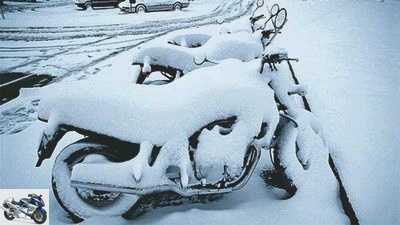
archive
counselor
workshop
Here’s how it works: mothballing
Mothball the motorcycle
Winter break
If you don’t want to use your motorcycle for some time, for example in winter, you should do a few things beforehand. They protect the material and make it easier to restart.
Klaus Herder
05/10/2009
If you take care of your motorcycle at the end of the season, you don’t have to worry about the first warm rays of sunshine in spring and try to make up for what you have missed in record time or even find that the first permanent damage has already occurred. Preparations for hibernation begin with an extensive vehicle wash.
Instead of using a high-pressure cleaner, which can damage bearings and plug connections, it is better to use a bucket and a sponge. At the same time, you can watch out for paint damage or oil leaks. Important: Rinse with plenty of clear water so that cleaning agent residue does not gnaw into sensitive surfaces over the winter. After it is completely dry, the motorcycle is prepared for the resting phase as described below.
Oil change
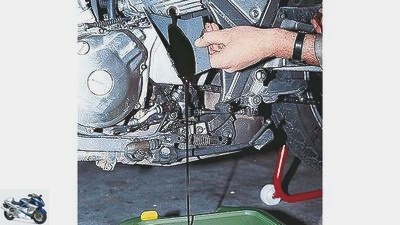
The combustion residues in the oil are no longer a problem for today’s engines, and thanks to special additives, aggressive substances no longer form in modern oils, but those who prefer to change the oil and filter (at operating temperature) can do so in spring when the weather is nice take off.
tank
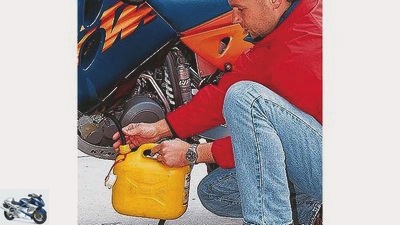
In the case of motorcycles with a steel tank (can be easily clarified using a magnet test), the fuel tank must be full to the brim when parking so that corrosion does not stand a chance. It is best to overwinter aluminum and plastic tanks completely empty. This avoids aging of the fuel, during which the ignitable components can volatilize.
Carburetor
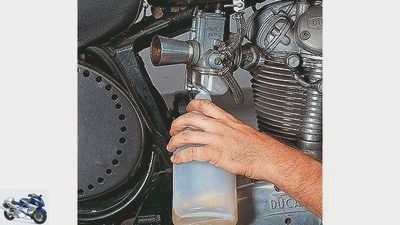
The float chambers of motorcycles fitted with carburettors must be completely emptied so that no deposits can form due to the oxidation of the fuel. In addition, stale fuel becomes extremely unwilling to ignite over time, which would otherwise lead to seemingly endless organ work at the start of the season.
battery
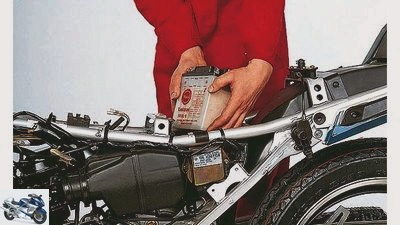
If the machine winters outdoors or if the battery cannot be charged while it is installed, it is removed and stored in a cool, dry place. If you don’t have a special freshness-keeping device, you can charge the battery after removal, during the rest phase and before installation. In the case of lead-acid batteries, top up with distilled water up to the max mark. Maintenance-free (MF) batteries must not be opened.
Frost protection
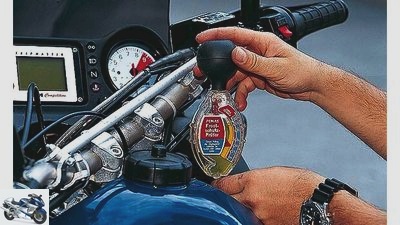
If the machine is outside or in an unheated room over the winter, then safe frost protection must be ensured with water-cooled motors. Sufficient antifreeze in the coolant prevents damage to lines and engines.
chain
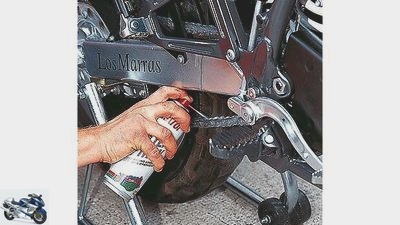
At least before mothballing, motorcycle owners should take the opportunity to remove dirt and old grease from the drive chain with a special chain cleaner. After drying, you can use chain spray vigorously. In addition, the chain slack should be checked and, if necessary, readjusted according to the information in the manual.
Preserve
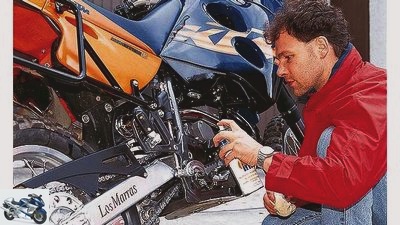
Thorough preparation also includes cleaning and caring for the angled and hard-to-reach corners. If you discover paint damage, it is best to fix it immediately and not wait until spring. Sensitive surfaces and the bearings can be effectively protected against corrosion with a special preservative spray (available from specialist shops).
Oil in the candle hole
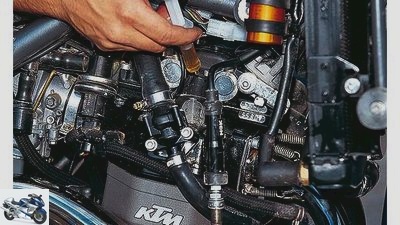
This trick is not absolutely necessary for the relatively short wintering period. If the engine is not used for a longer period, however, a few drops of oil, which are trickled or sprayed through the spark plug holes into the combustion chamber, prevent the piston rings from corroding and sticking. After the treatment, crank the engine a few times with a kick starter without ignition or crank the rear wheel with a gear engaged so that the oil can form an even protective film.
tire
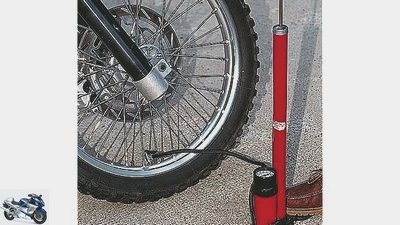
Before long downtimes, it makes sense to search the running surfaces and flanks for damage and cracks. In addition, inflate the tires at the front and rear with the correct maximum pressure (with passenger and luggage). Very meticulous contemporaries jack up the motorcycle in such a way that both tires are relieved – although pressure points (flat spots) are not to be expected if the pressure is correct.
Related articles
-
Here’s how it works: All about chains
archive accesories Here’s how it works: All about chains That’s how it’s done Everything about chains Lighter than a cardan shaft, cheaper than a toothed…
-
This is how it works: Remove rust from the tank
counselor workshop This is how it works: Remove rust from the tank This is how it works: derust the tank How do I get rid of the rust? Rotten fuel…
-
This is how it works: Adjust the spring base yourself
accesories landing gear & Spring elements This is how it works: Adjust the spring base yourself This is how it works: Adjust the spring base Adjust the…
-
This is how it works: motorcycle care
accesories This is how it works: motorcycle care This is how it works: motorcycle care With these tips, your motorcycle will sparkle again as if it were…
-
Adviser: Almost everyone can still learn something here
fact counselor workshop Adviser: Almost everyone can still learn something here Guide: Buy / Know / Right Almost everyone can still learn something here…
-
Balancing motorcycle tires – this is how it works
wolf 8th pictures wolf 1/8 Haweka balancing professional Uwe Westermann at the versatile Bike Boss Louis 2/8 Static yes, dynamic no: balancing stands…
-
Tips for wintering the motorcycle: Short and sweet for the impatient
Jorg Lohse counselor workshop Tips for wintering the motorcycle: Short and sweet for the impatient Tips for wintering the motorcycle Short and sweet for…
-
How it works: tours with children
archive counselor workshop How it works: tours with children That’s how it’s done Tours with children When dad comes back beaming with joy on a Saturday…
-
Report: Portrait of the Ducati works driver Cal Crutchlow
Wood 11 pictures Gold and Goose Photography 1/11 Someone like Cal Crutchlow spends the whole year flying around the world in business class, puts a…
-
BMW radar reflector patent: Hello car, here I am
BMW counselor technology & future BMW radar reflector patent: Hello car, here I am BMW radar reflector patent Hello car, here I am An important point for…